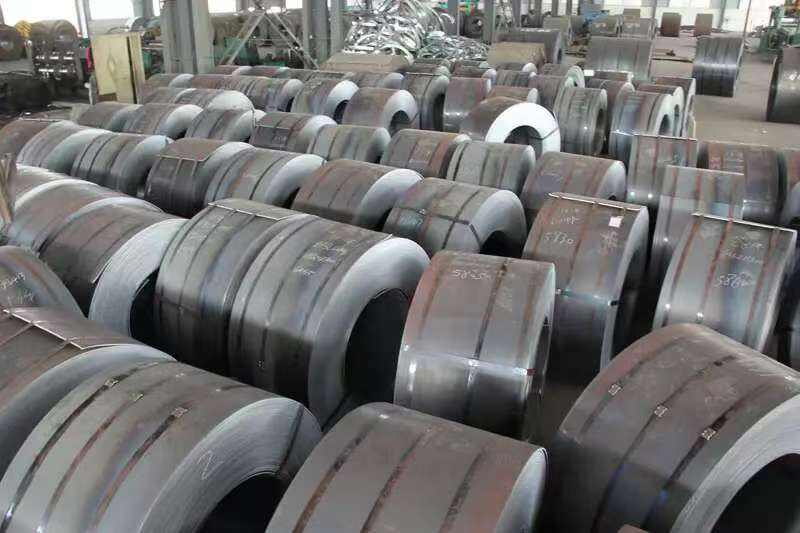The Manufacturing Advantages of Heat-Processed Steel Sheets
Hot rolled coil represents a fundamental material in modern manufacturing and construction due to its unique production process and versatile material properties. The hot rolling technique involves shaping steel at temperatures exceeding 1700°F, creating a product with distinct mechanical characteristics that cold-rolled alternatives cannot match. This high-temperature processing gives hot rolled coil its signature scaled surface and slightly rounded edges, along with improved formability and strength. Industries ranging from automotive to infrastructure rely on hot rolled coil for structural components, pipes, and heavy equipment where durability matters most. The cost-effectiveness of mass-producing hot rolled coil makes it indispensable for large-scale projects requiring consistent quality and performance.
Superior Material Properties
Enhanced Structural Integrity
The hot rolling process refines the steel's grain structure, creating a more uniform and dense material composition throughout the coil. Hot rolled coil maintains better impact resistance than cold-rolled steel, making it ideal for structural applications subject to dynamic loads. The material's increased ductility allows for substantial forming and shaping without compromising its structural performance. Manufacturers value hot rolled coil for its consistent mechanical properties across the entire length of the coil, ensuring reliable performance in finished products. These characteristics explain why hot rolled coil remains the material of choice for seismic-resistant construction and heavy machinery components.
Improved Stress Distribution
Unlike cold-rolled steel that retains internal stresses from processing, hot rolled coil exhibits more uniform stress characteristics. The heat treatment during rolling eliminates residual stresses that could cause warping or dimensional instability in finished products. This stress-relieved quality makes hot rolled coil particularly suitable for welding applications where internal stresses might otherwise lead to distortion. Fabricators appreciate how hot rolled coil maintains its shape during cutting and machining operations, reducing the need for additional stress-relieving treatments. The material's stability proves invaluable for large structural assemblies where precise dimensional tolerances are critical.

Cost-Effectiveness and Production Efficiency
Lower Manufacturing Costs
Hot rolled coil production requires fewer processing steps than cold-rolled steel, resulting in significant cost savings that get passed through the supply chain. The high-temperature rolling process consumes less energy per ton than cold rolling operations that require multiple passes at room temperature. Manufacturers can produce hot rolled coil in larger quantities and wider gauges than cold-rolled alternatives, improving economies of scale. The material's as-rolled surface eliminates the need for additional finishing processes required by other steel products. These cost advantages make hot rolled coil the most economical choice for applications where surface finish perfection isn't critical.
Faster Production Timelines
Steel mills can produce hot rolled coil with shorter lead times compared to cold-rolled products due to the streamlined manufacturing process. The continuous rolling technique allows for the production of coils up to several tons in weight without interruption. Fabricators benefit from the material's immediate availability for further processing, without the additional annealing or tempering steps required by other steel forms. Construction projects using hot rolled coil can maintain aggressive schedules thanks to reliable material availability from multiple suppliers. This production efficiency helps manufacturers respond quickly to fluctuating market demands and project timelines.
Versatility Across Industries
Automotive and Transportation Applications
Automakers utilize hot rolled coil for structural frame components, wheel rims, and chassis parts that require high strength-to-weight ratios. The material's formability allows for complex shapes in vehicle crumple zones that absorb impact energy during collisions. Railroad manufacturers rely on hot rolled coil for durable track components and freight car construction that withstands constant heavy loads. The transportation sector values hot rolled coil for its consistent performance in extreme temperature variations encountered during vehicle operation. These applications demonstrate how hot rolled coil meets the demanding requirements of modern mobility solutions.
Construction and Infrastructure Uses
Structural steel fabricators specify hot rolled coil for beams, columns, and decking that form the skeletons of commercial buildings and bridges. The material's weldability and strength make it ideal for seismic bracing systems and moment-resistant frames in high-rise construction. Infrastructure projects use hot rolled coil for guardrails, drainage culverts, and transmission towers that require decades of reliable outdoor performance. The construction industry appreciates how hot rolled coil provides consistent quality across large orders for major projects. These structural applications highlight the material's role in shaping the built environment.
Environmental and Sustainability Benefits
Energy-Efficient Production
The hot rolling process consumes approximately 20% less energy than cold rolling operations for equivalent steel quantities. Modern hot rolled coil mills employ energy recovery systems that capture and reuse heat from the rolling process. The shorter production route from slab to finished coil reduces the overall carbon footprint compared to multi-step steel processing methods. Manufacturers pursuing sustainability goals increasingly specify hot rolled coil for its favorable environmental profile. These energy efficiency advantages position hot rolled coil as a responsible choice in an era of heightened environmental awareness.
Recyclability and Circular Economy
Hot rolled coil maintains all the recyclability benefits of steel, with the ability to be reprocessed indefinitely without quality degradation. The material's simple composition (primarily iron) makes it easier to recycle than complex alloys or coated steel products. Scrap from hot rolled coil fabrication gets immediately reintegrated into steel production streams, supporting closed-loop manufacturing. Construction projects using hot rolled coil contribute to green building certifications through the material's high recycled content and end-of-life recoverability. These sustainability characteristics make hot rolled coil a forward-looking choice for environmentally conscious projects.
Fabrication Advantages
Machining and Forming Flexibility
Hot rolled coil offers superior workability for manufacturers requiring extensive forming or machining operations. The material's ductility allows for deep drawing operations that would fracture more brittle steel products. Fabricators can punch, shear, and drill hot rolled coil without specialized tooling required by harder materials. The consistent hardness throughout the coil ensures uniform tool wear during high-volume production runs. These processing advantages reduce manufacturing costs and improve production yields across multiple industries.
Welding Performance
The homogeneous composition of hot rolled coil produces cleaner, stronger welds than heterogeneous steel products. Welders appreciate the material's consistent penetration characteristics and reduced risk of heat-affected zone cracking. The absence of internal stresses minimizes post-weld distortion, reducing the need for corrective machining. Hot rolled coil's predictable thermal expansion properties allow for precise weld gap calculations in structural assemblies. These welding benefits explain why fabricators prefer hot rolled coil for critical load-bearing structures.
FAQ
How does hot rolled coil differ from cold-rolled steel in terms of surface finish?
Hot rolled coil has a characteristic scaled surface from the cooling process, while cold-rolled steel undergoes additional processing to achieve a smoother, more precise finish suitable for visible applications.
What industries benefit most from using hot rolled coil?
Heavy equipment manufacturing, structural steel fabrication, pipe and tube production, and automotive component manufacturing derive the greatest advantages from hot rolled coil's combination of strength and formability.
Can hot rolled coil be used for precision applications?
While hot rolled coil has dimensional tolerances less tight than cold-rolled products, modern mills can produce hot rolled coil with sufficient precision for many industrial applications when processed with appropriate machining techniques.



